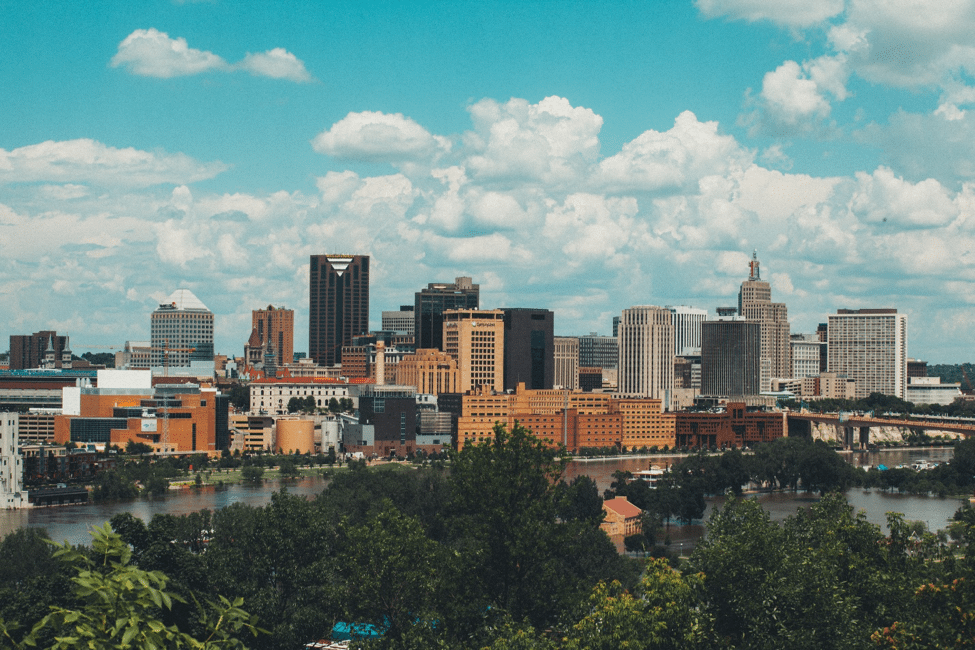
Best Hikes & Trails in The Twin Cities
Residents of the Twin Cities are known for their love of the outdoors. Both Minneapolis and Saint Paul are close in proximity to several lakes, wildlife areas and sit along the Mississippi River. This has led to the Twin Cities frequently topping lists of the fittest cities in America. If you are looking for an outdoor adventure within and near city walls, use this guide to discover some of the best hikes and trails in Minnesota.
Lebanon Hills Regional Park
Lebanon Hills Regional Park is located about 20 minutes from downtown Minneapolis, and it was recently named one of the 10 best attractions in the state. In the center of the park is the Jensen Lake Trailhead. This area has more than 14 miles of hiking trails in the summer and seven miles of hiking and snowshoeing trails in the winter. The trailhead also has a scenic canoe route and 12 miles of trails for cross country skiing.
Elm Creek Park Reserve
The Elm Creek Park Reserve is located about 20 minutes north of the city. This park takes up 4,900 acres, making it the largest in the Three Rivers Park District. The park is home to the 8.43-mile Shingle Creek Trail. With a smooth path through several wooded areas, this trail is great for beginners. Those wishing to add a little more distance can try the connecting Rush Creek Regional Trail which runs 9.64 miles.
Mill Ruins Park
Head to Mill Ruins Park for a taste of local history. Running through downtown Minneapolis, this park is in the St. Anthony Historic District and it is close to the 1883 Stone Arch Bridge. The park gets its name from the ruins of former flour mills on the site. Visitors can either walk along the park’s paths, or take one of the guided tours offered at 11 a.m., 1 p.m. and 3 p.m.
Hyland Lake Park
Hyland Lake Park has a mix of picturesque prairie landscapes and views of the lake it is named for. The area has a playground for young children, an 18-hole disc golf course and a ski area during the winter months. Those looking for an easier hike should try the Hyland Lake Loop. The path goes for about 2 miles, passing the wetland and cattail marshes. To add distance, continue walking on the connecting Prairie Loop. This trail is great in the spring when the wildflowers are in bloom.
Minnesota Valley State Recreation Area
The Minnesota Valley State Recreation Area is ideal for a day trip away from the city. It has its own connection to history, as the area dates back to the U.S.-Dakota War of 1862. The park runs parallel to the Minnesota River, which can best be seen through the Minnesota Valley State Trail. This trail has options for those looking to go hiking, horseback riding or riding on a snowmobile. It runs a total of 27.1 miles, and a new segment is currently in construction.
Fort Snelling
A national historic landmark, Fort Snelling is located right where the Minnesota and Mississippi rivers meet. The location was originally named Fort Saint Anthony before it was renamed in 1825 for its commander and architect Colonel Josiah Snelling. This park is home to the Pike Island Loop, a 4-mile trail around the island located at the meeting point of the two rivers. The trail has options that go under the forest canopy and cross trails that can shorten the hike.
Luce Line
Those interested in a challenge should check out the Luce Line Trail. Stretching a total of 63 miles, this trail connects Plymouth to the small town of Cosmos. The trail used to be a railroad line. Now, it is an area for people who want to hike or run in the summer months, and go cross country skiing or snowmobiling in the winter months. The paths are made of crushed limestone, and leashed dogs can join in on the fun.
Minnehaha Regional Park
Minnehaha Regional Park is one of Minneapolis’ oldest and most popular parks, seeing more than 830,000 visitors each year. This park is home to a 53-foot waterfall known for mesmerizing visitors as the water falls onto the rocks below. There are several recreational options including a disc golf course, volleyball court and several gardens. One of the premier hiking options is the Minnehaha Creek trail. This 22-mile route goes from Lake Minnetonka to the Mississippi River. Hikers can enjoy colorful trees in the fall, as well as local flora and shrubs. This trail also has options for cross country skiing.
Minnesota Valley National Wildlife Refuge
Although it has an unusual name, the Louisville Swamp Unit is a great area for viewing the wildlife. The area is inside the Minnesota Valley National Wildlife Refuge, which is home to many different ecosystems. Keep an eye out for native plants, songbirds and small animals while walking one of the 14 miles of trails. The State Trail Access lasts for about 12 miles, but for extra distance add the Mazomani Trail that borders the lake.
Minneapolis and St. Paul both have a great variety of hikes and trails to choose from. But even those looking for an outdoor adventure can’t forget to explore inside the city. Collectively, Minnesota has too much to offer to cram in one trip.













